Anxiety is a common mental health issue among autistics. For an autistic child or an adult, learning to use an AAC system may intensify their anxiety issues. This blog tells you how autistic users can be supported in their AAC journeys, while also supporting their mental health.
Anxiety & Autism
The National Institute of Mental Health describes anxiety as feeling restless or tense, finding it difficult to control worrying, getting fatigued quickly, getting irritated easily, difficulty sleeping and difficulty concentrating on tasks.
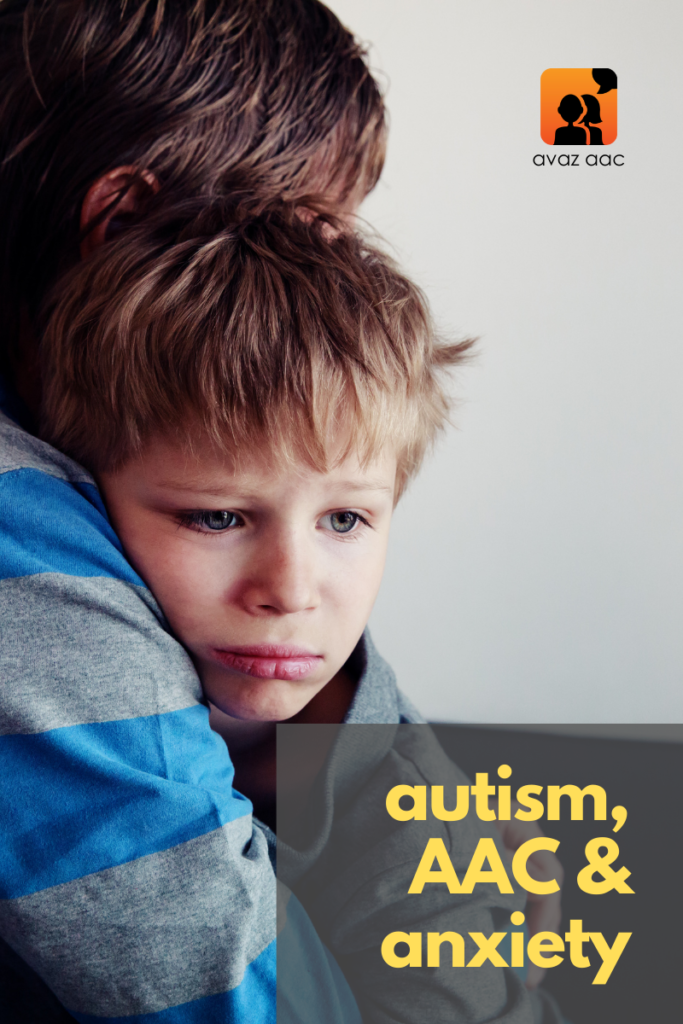

To these complex feelings, we add in the complex needs of people with Autism.
The National Autistic Society from the UK cites research that suggests that nearly 40-50% of people with Autism suffer from anxiety. Another survey suggested that nearly 60% of this population claim that anxiety has a big impact on their day-to-day functioning.
Now to this mix of Autism and anxiety issues, we add in learning how to use an AAC system.
As a consequence, we can come to the conclusion that as the communication partner for a person with Autism using AAC, their anxiety can play a major role in their learning of the AAC system but also their ability to use it to communicate effectively.
What Does Anxiety Look Like in the AAC Journey?
This list is not exhaustive. But it should give you an idea of what to look out for when you are modelling and teaching language on an AAC system either in a therapy session or at home.
- Increase in the rate of breathing and increase in self-stimulating behaviours, e.g rocking, flappings hands.
- Attempting to hide, avoid or escape the sessions by asking to leave the room or asking to go to the toilet.
- Getting upset, angry or crying or becoming aggressive.
- Disengaging from the activity or showing disinterest by looking away or taking a long time to respond.
Identifying Triggers
As the communication partner, you have seen one of these behaviors, what do you do next?
The most important step is to identify the triggers. We need to find out what caused the anxiety to arise or worsen. We can do this by observing various aspects of their environment. This includes:
The Communication Environment
This means the trigger could be the behavior of the communication partner during interaction with the AAC system. For example:
- When you are increasing the complexity of the task but not providing enough modelling or not giving enough prompts for them to be successful.
- Asking too many questions. Engaging in one-way communication where the AAC user is only answering questions endlessly.
- Making them try a new skill without preparation. Doing so without rehearsing or role playing ahead of time to give them an idea of what is expected of them.
The Environment Around Them
This can mean a change in their typical environment. For example, change in seating or lighting in the room, having a different family member other than the one that usually supports them, practicing communication in a new place with new people.
The Environment Within Them
This relates to the individual’s health. This could be physical health (e.g. having a headache or tummy ache) or a mental health concern (e.g. feeling sad about some event)
So we now know that the anxiety needs to be addressed. We can do this by finding out their triggers and making accommodations for them. But when the impact of the anxiety worsens, it is best to consult a mental health professional to learn strategies to manage it.
Supporting Communication & Anxiety
Now from a communication perspective, how can we help?
Communicating at this heightened emotional state of anxiety is something that AAC users might find most difficult to do. Hence it is very important that we support them with it. This support can be broken down into the following steps:
STEP 1: Communicate WHAT They are Feeling
Teaching them to express their feelings would be the first step. They may need additional support to recognize and label each feeling based on what their body is telling them.
Once they learn that, you can teach them to use a feelings board or using feelings words on an SGD. We have to support them to communicate phrases like “I AM STRESSED” or “I AM FEELING ANXIOUS”.
STEP 2: Communicate WHY They are Feeling That Way
This step would require the AAC user to think about why they are feeling anxious.
When you are labelling feelings in the previous phase, you can also by model to the user why you think they are feeling that way. E.g. “You are ANXIOUS. GREETING new people is DIFFICULT.”
As you keep modelling, you can make a folder called “I FEEL ANXIOUS BECAUSE” and add in words or sentences for the different reasons they may be getting anxious. Remember to have an extra option called ‘SOMETHING ELSE’ in that folder for a reason that may not be in the folder already. Alternatively, you can also support them to type out the reason why they are feeling this way.
STEP 3: Communicate WHAT to do to Feel BETTER
By now we have established how the user is feeling and we know the reason why. Next we need to support them to make themselves feel better. Or get them to tell us how we can help them out. We can build a list of relaxing and calming activities to do when feeling anxious.
You can make a folder or communication board titled “WHEN I FEEL ANXIOUS I CAN” and list the activities e.g. deep breaths, walk, listening to songs, alone time etc. that they could ask for to calm their anxiety.
To give you an idea of these steps in action, here are some screenshots from the Avaz app.
Conclusion
In summary, as communication partners of AAC users who have anxiety concerns, we have to look out for signs, make accommodations in the environment and support them to advocate for their needs.
WRITTEN BY
Nayantara Nambiar, MSP, BASLP
Speech Language Pathologist
Trained in India and Australia, I am passionate about supporting people with communication and swallowing difficulties. Equipped with experience in Rehabilitation, School and Early Intervention settings, I strive to provide a holistic intervention approach tailor-made for my clients and their families.



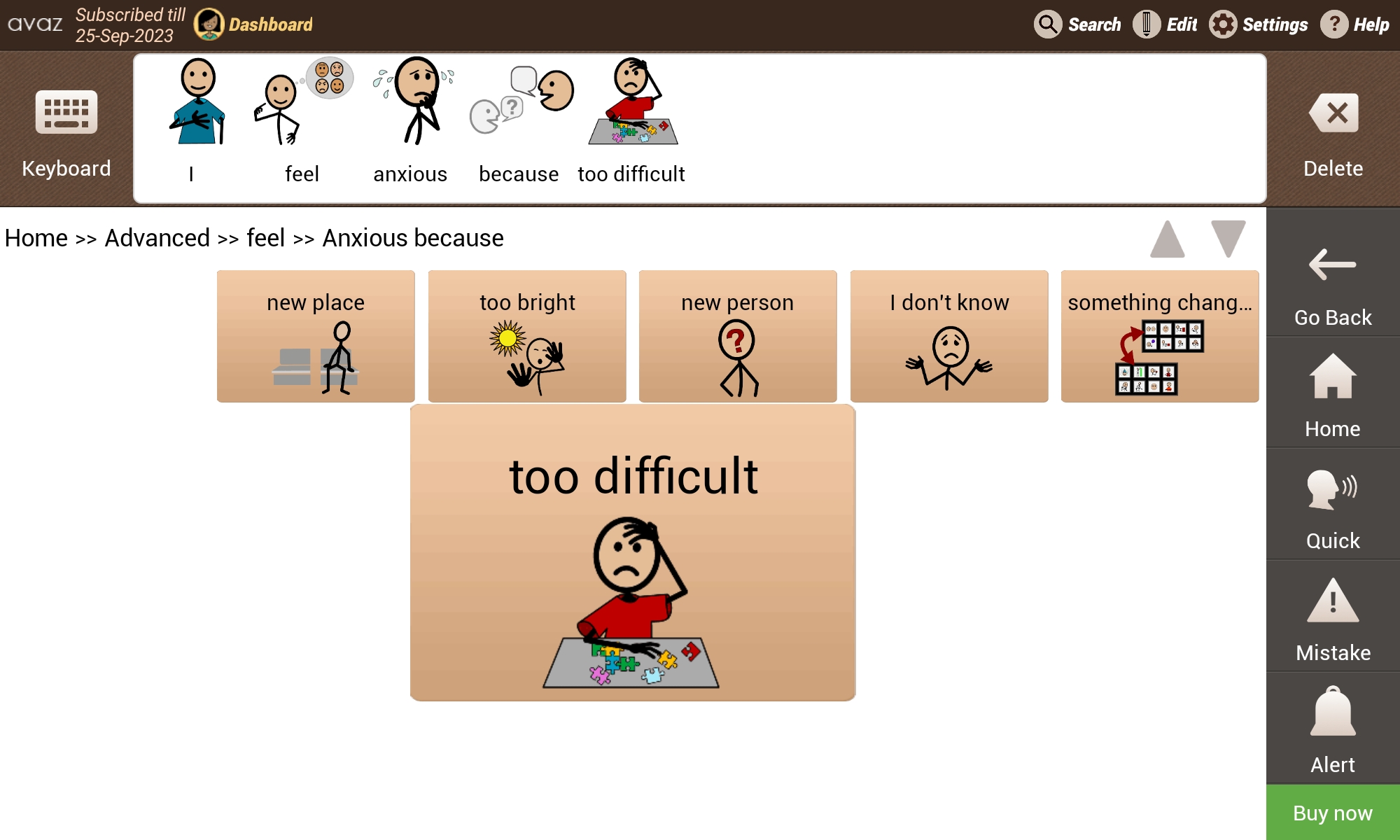
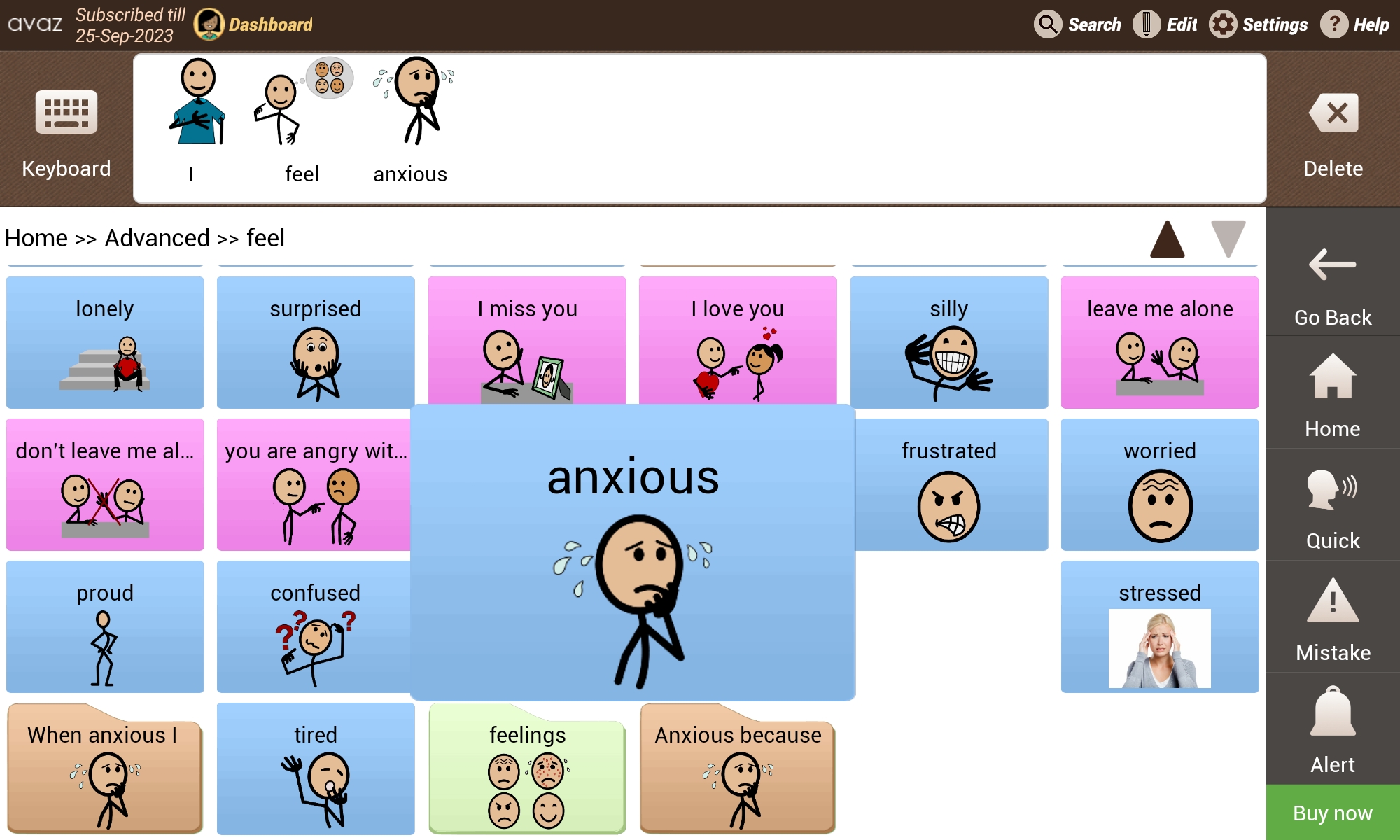
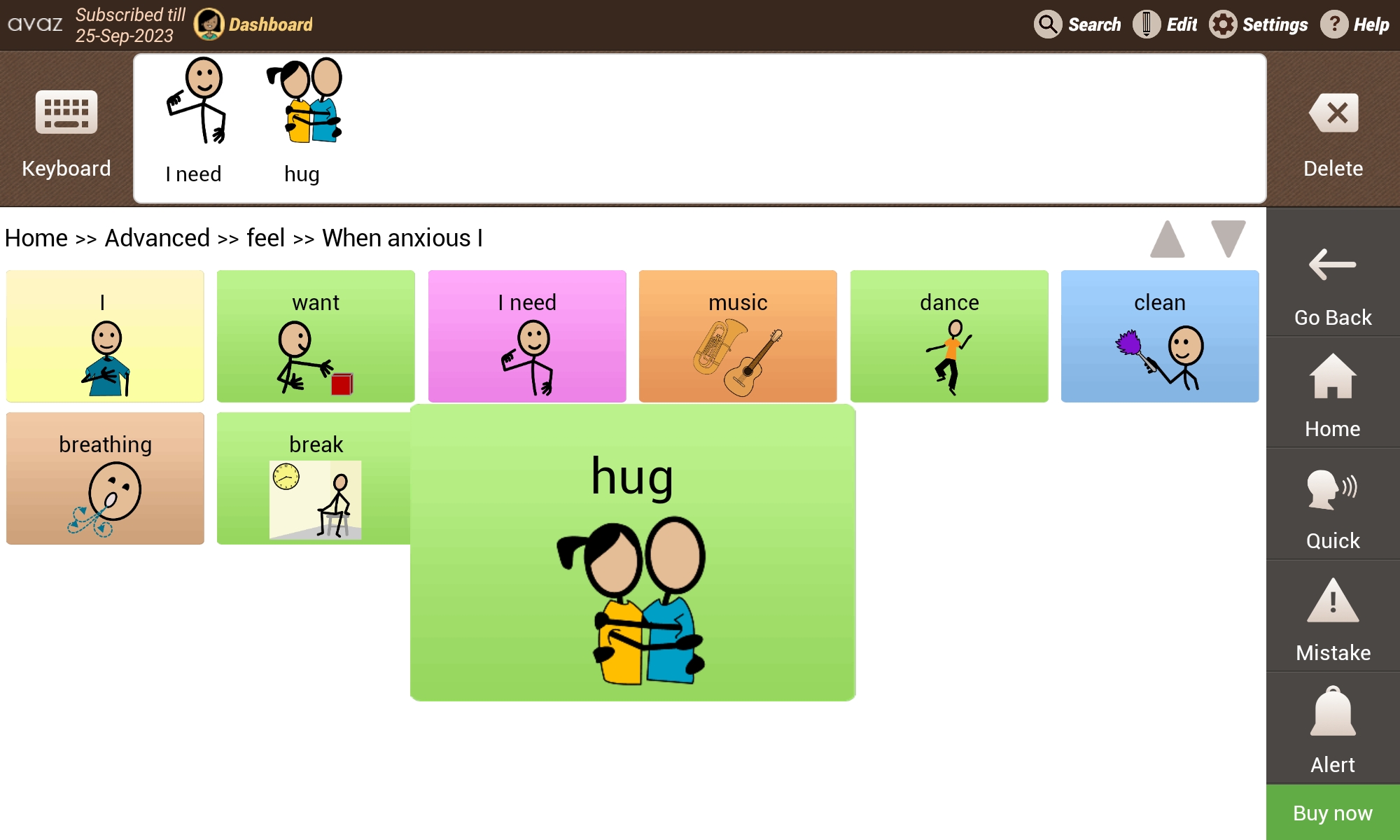

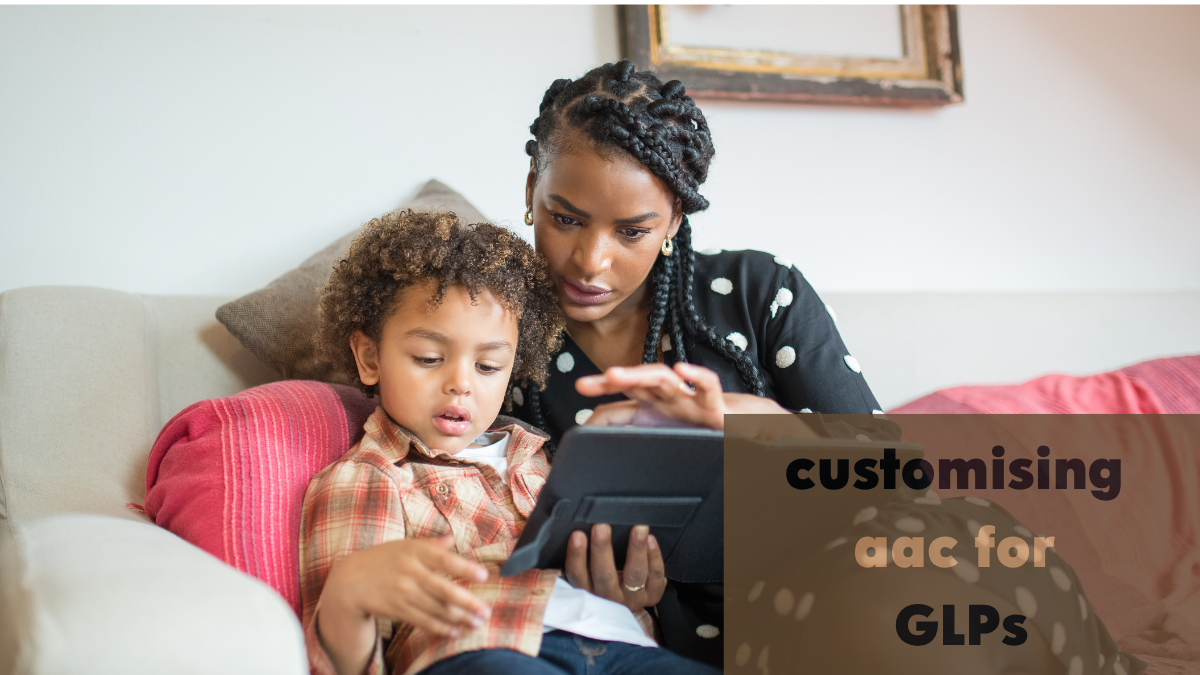
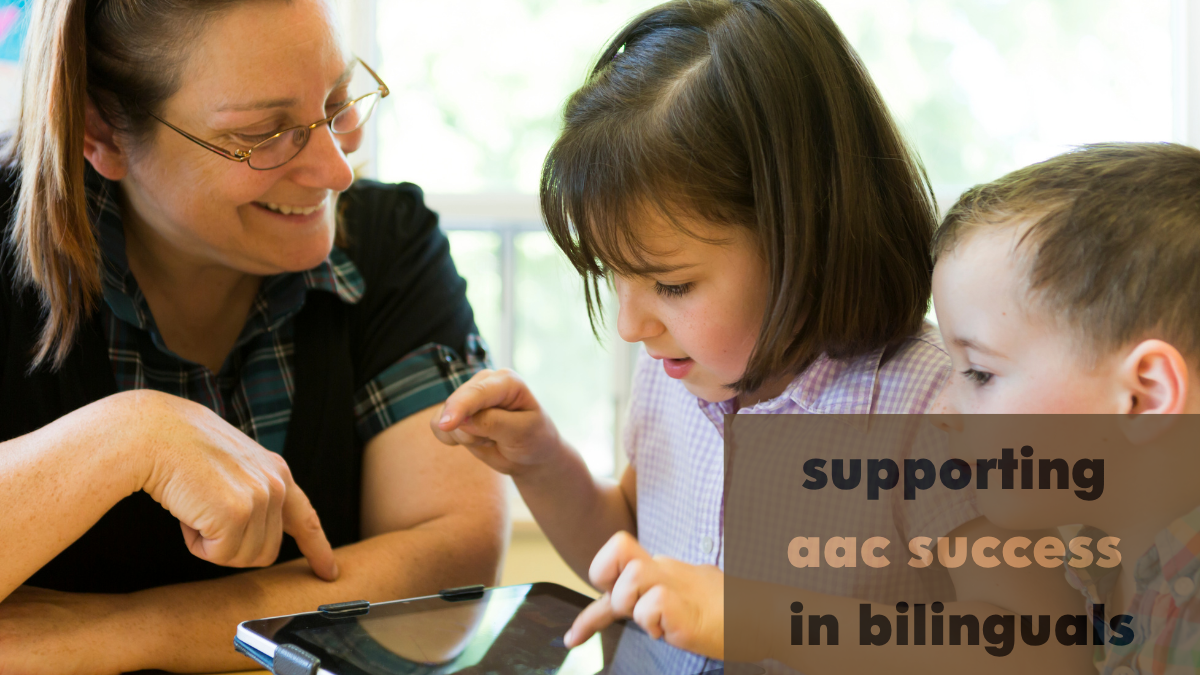
Excellent suggestions. Will give it a try.